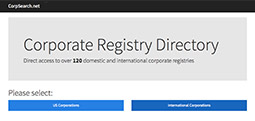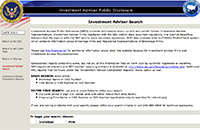Five Ways to Find Ultimate Beneficial Ownership
By Bachir El Nakib (CAMS), Senior Consultant, Compliance Alert (LLC).
Five open source methods to help you track down ultimate beneficial owners (UBOs).
There has been a lot of attention on FinCEN’s proposed customer due diligence requirements for financial institutions to identify beneficial owners of legal entity customers. Even though these rules are greatly needed, anyone who has ever been tasked with this responsibility knows just how complex it can be to identify UBO information.
Unfortunately today, there is no central database where this information exists, and most governments do not even require the information to be captured when a company is registered.
Despite that, UBO information can many times be identified through public sources. Below are some of the best ways to help identify company owners.
1. Company Website
The public source starting point for any company research should be the company’s own website. While this is obviously a biased source, it can identify key senior management who many times also turn out to be company owners. It can also identify if the company is a subsidiary of another company.
For publicly traded companies, look for the “Investor Relations” section of the site for ownership. If not specifically highlighted, the company’s most recent annual report and/or audited financials may contain this information. Remember, just because a company is publicly traded, it doesn’t mean that there aren’t individual shareholders with a significant portion of the company.
Bonus tip: Make sure to look at the company’s copyright footer at the bottom of the site’s web page. This can be useful in identifying the company’s full legal name for future research, and many times can identity a parent company if the company is a subsidiary.
2. Corporate Registries

Corporate registries maintain incorporation filings and records for legal entities. For non-publicly traded companies, they are the best way to help track down ownership.
The challenge arises in that they are location specific and every country/state has different laws on what information needs to be obtained at the time of incorporation. Also, not all registries provide direct or full access to their information.
To save you the time of trying to find every different international corporate registry or Secretary of State website, below are some links to corporate registry directories and searches.
- CorpSearch – List of international and domestic corporate registries
- Open Corporates (search engine for incorporation records)
- Investigative Dashboard
- List of company registers (Wikipedia)
Bonus source: ICIJ’s Offshore Database
3. EDGAR For Publicly Traded Companies and their Subsidiaries
The EDGAR (Electronic Data Gathering, Analysis, and Retrieval) database maintains a searchable index of filings by companies who are required by law to report with the Securities and Exchange Commission.
The volume of different types of filings contained in the EDGAR database can get overwhelming quickly if you are not sure where to look.
Every corporation listed on a U.S. stock exchange is required to file annual reports with the SEC, called a 10-K form. The “Exhibit 21” of the 10-k provides a list of subsidiary companies along with the place of incorporation for each subsidiary.
In addition to the 10-k, Forms 3, 4, and 5 can be used to identify corporate insiders, which are company officers, directors, or any beneficial owner owning more than 10% of its stock.
4. Form ADV (for investment advisers only)

The Form ADV is used by investment advisers to register with both the Securities and Exchange Commission and state securities authorities. The form consists of two parts, and part one requires information about the investment adviser’s ownership, in addition to information about its clients, employees, business practices, affiliations, and any disciplinary events of the adviser or its employees.
To perform an investment adviser search, visit the Investment Adviser Public Disclosure website and enter the firm’s name. Information on the firm’s direct and indirect ownership is contained underSchedule A and Schedule B on the bottom left menu sidebar.
5. Search Engines
The indexed public web now contains over 30 trillion web pages (that’s right, 30,000,000,000,000). There is a very good chance that information on a company’s ownership is identified somewhere out there. To avoid being overloaded with a flood of non-relevant results, I suggest targeting your search query similar to the below, which will work in all major search engines.
"Company Name" owner OR shareholder
There is no one-stop-shop for UBO information, but the above are some of the best public resources available to researchers today. In future posts, I plan on breaking down some of the other more practical challenges facing KYC officers complying with UBO regulations
https://transparint.com/blog/2015/10/20/how-to-find-ultimate-beneficial-ownership/

